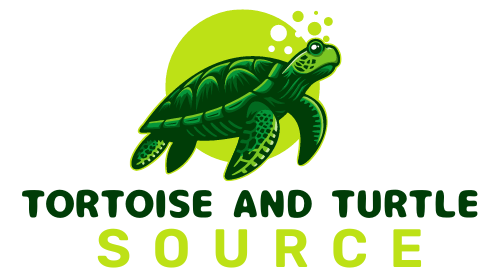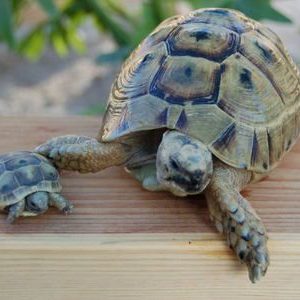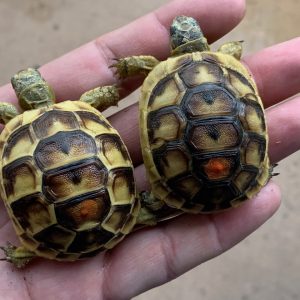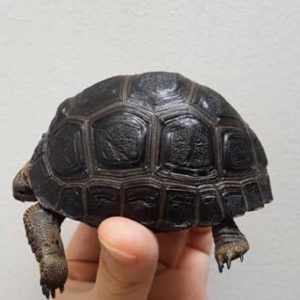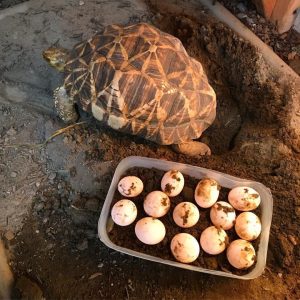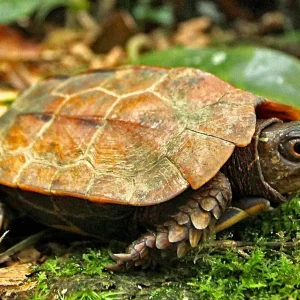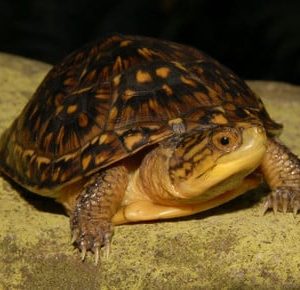Introduction:
The African Sulcata tortoise, renowned for its impressive size and captivating demeanor, stands as a testament to the awe-inspiring diversity of the reptilian kingdom. In the realm of tortoises, few species command as much attention and admiration as the African Sulcata. Among the myriad aspects that intrigue enthusiasts and researchers alike, the sheer size of these majestic creatures emerges as a focal point of fascination. In this article, we delve into the intricacies of African Sulcata tortoise size, exploring the factors influencing their growth and dimensions, as well as the implications of their imposing stature on their care and habitat requirements. Join us on a journey into the dimensions of one of nature’s most magnificent reptiles, as we unravel the mysteries surrounding the size of the African Sulcata tortoise.
Size of Full-Grown Sulcata Tortoise
The question arises: How big does a Sulcata tortoise get? Identified as the largest species of tortoise in Africa, and the 3rd largest globally, a full-grown African Sulcata tortoise can reach lengths ranging from 18 to 28 inches. Notably, males tend to outgrow females, and regional factors can further influence their size. For instance, Sundanese Sulcata tortoises are recognized as the largest subspecies, with weights varying between 75 to 150 pounds, predominantly falling within the 80 to 90-pound range. Consideration of the complete deluxe tortoise habitat kit is highly recommended for those seeking supplies alongside the tortoise acquisition.
-
Baby (Jordanian) Greek Tortoise
$220.0 -
Baby (Libyan) Greek Tortoise
$250.0 -
Baby (Northern Ibera) Greek Tortoise
Original price was: $350.0.$291.0Current price is: $291.0. -
Baby (Southern Ibera) Greek Tortoise
$225.0 -
Baby Aldabra Tortoise
Original price was: $1,200.0.$850.0Current price is: $850.0. -
Baby Burmese Star Tortoise (big babies hatched early 2018)
$500.0 -
Baby Hermanns Tortoise (Western)
Original price was: $700.0.$500.0Current price is: $500.0. -
black breasted leaf turtle
$300.0 -
Blanding’s Turtle
$495.0
Factors Affecting Sulcata Tortoise Growth Rate
The growth rate of a Sulcata tortoise is influenced by several factors. Consequently, an exact determination of how fast a Sulcata tortoise grows remains elusive. Variables such as protein content, humidity levels, supplement types, and feeding frequency collectively contribute to the individualized growth rate of each tortoise. As a general guideline, anticipate a growth of 2 to 4 inches in length and 1 to 2 inches in width annually. Weight gain correlates with age and should be assessed proportionally, typically ranging from 5 to 10% per year for baby Sulcata tortoises.
Essential Care for African Sulcata Tortoises
Before acquiring a Sulcata tortoise, understanding proper care protocols is essential for ensuring a fulfilling experience with your new pet. The natural habitat of the African Sulcata tortoise encompasses arid, sparse regions of sub-Saharan Africa, setting the backdrop for their care requirements.
sulcata tortoise for sale (Geochelone sulcata)
Lifespan and Size of African Sulcata Tortoise
African Sulcata tortoises boast remarkable longevity and resilience, with a projected lifespan of 80 to 100 years for baby tortoises. Depending on the level of care provided, these tortoises may even outlive their owners, becoming generational companions within families. In terms of size, Sulcata tortoises can reach considerable dimensions, with expectations of reaching at least 18 inches in length and 50 pounds by the age of 15. By the age of 25, these tortoises typically attain full-grown dimensions in terms of length, width, and weight.
Appearance and Habitat of African Sulcata Tortoise
The visual characteristics of Sulcata tortoises exhibit distinctions between males and females, with males featuring a deeper concavity in their plastron and longer, thinner tails. Females, on the other hand, display a more rounded shell and shorter tail. Variations in coloration exist, ranging from yellow to darker shades of brown, with juveniles often showcasing lighter hues. Habitat-wise, providing a suitable environment for these tortoises entails careful consideration of size, substrate, and temperature regulation.
Dietary Needs and Care Practices
As herbivores, African Sulcata tortoises thrive on a diet primarily composed of grasses, hays, and edible weeds, supplemented with leafy greens and vegetables. Careful attention to nutritional balance and supplementation is imperative to support optimal growth and health. Vitamin and calcium supplements, along with a balanced diet, contribute to the overall well-being of these tortoises.
Maintenance of Habitat and Environmental Parameters
Maintaining appropriate environmental conditions within the tortoise habitat is crucial for ensuring the health and well-being of Sulcata tortoises. Considerations such as heating, lighting, substrate composition, and humidity levels play pivotal roles in replicating their natural habitat and promoting their physiological needs.
Health Monitoring and Veterinary Care
Regular health check-ups with a veterinarian experienced in peculiar animals are recommended for monitoring the well-being of Sulcata tortoises. Vigilant observation of their behavior, feeding patterns, and physical condition facilitates early detection of any health concerns. Additionally, adherence to proper care practices and attention to environmental factors contribute to the overall vitality of these fascinating reptiles.
